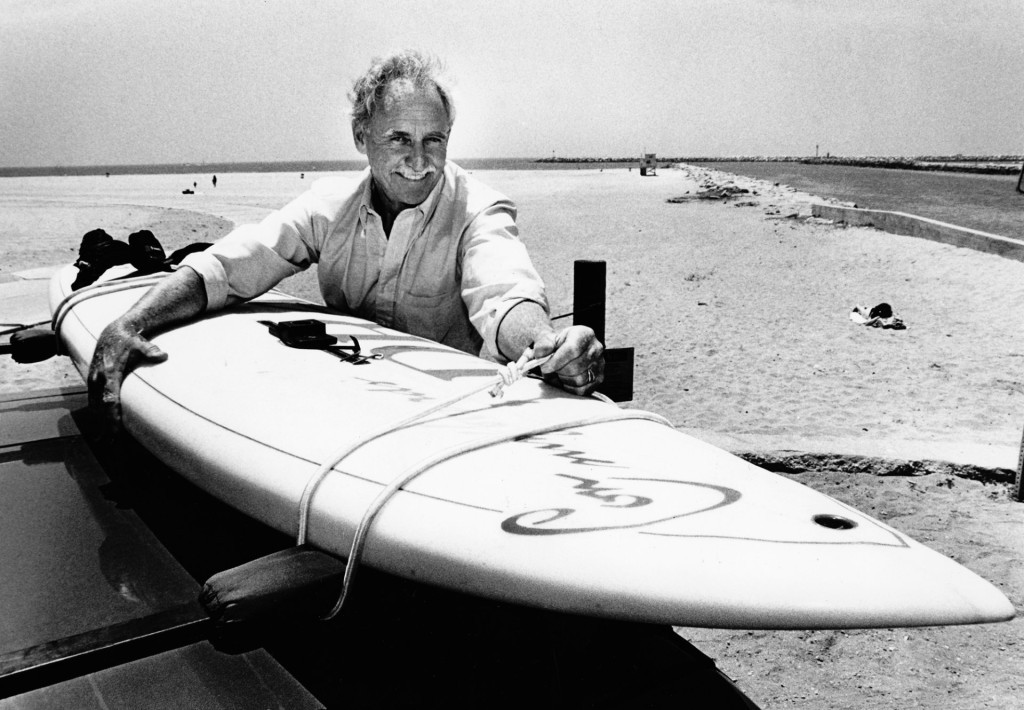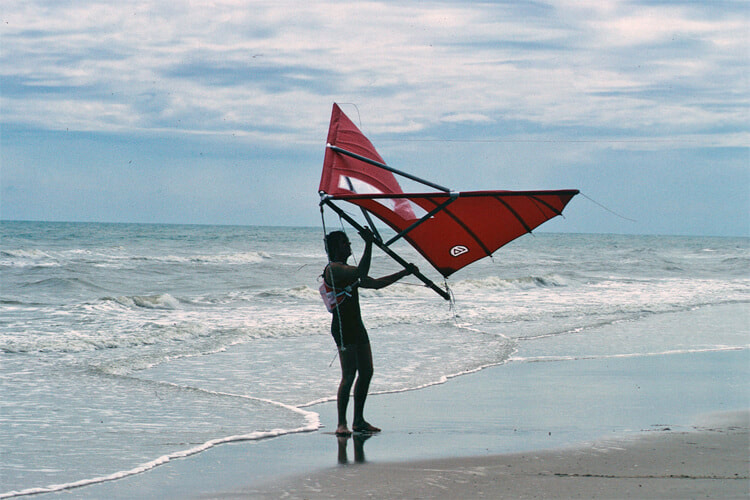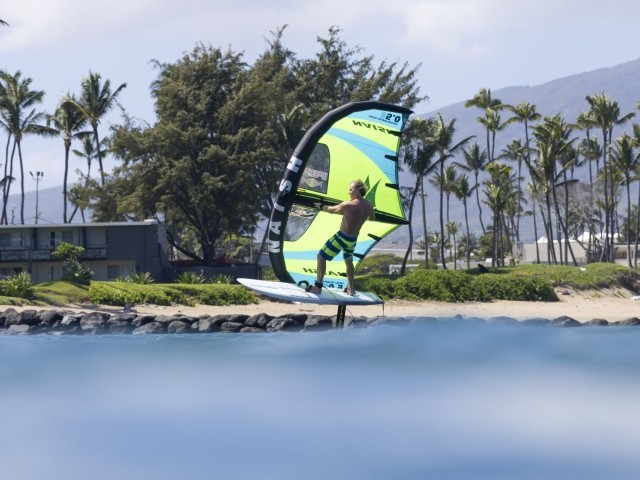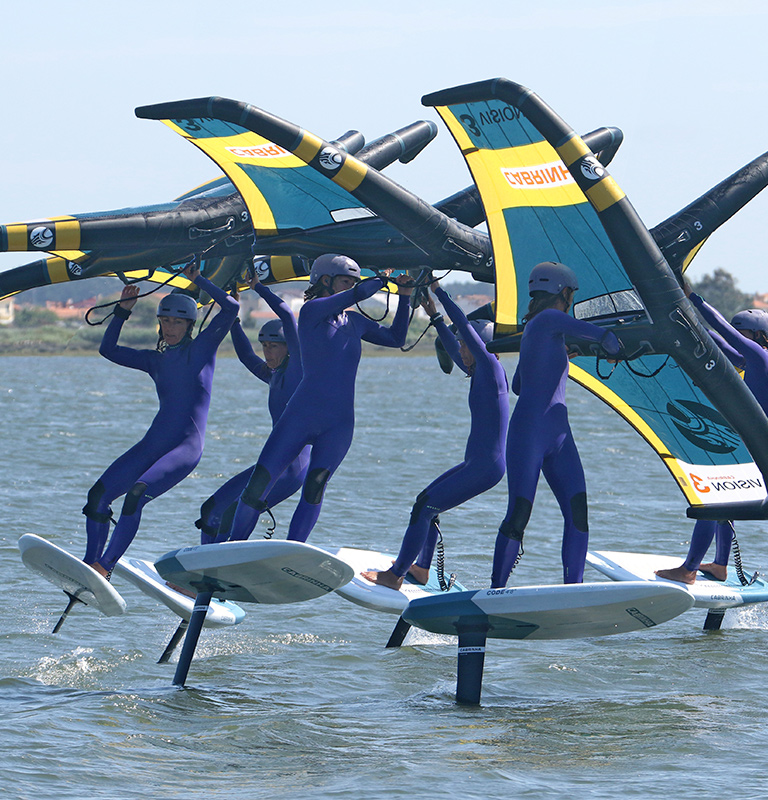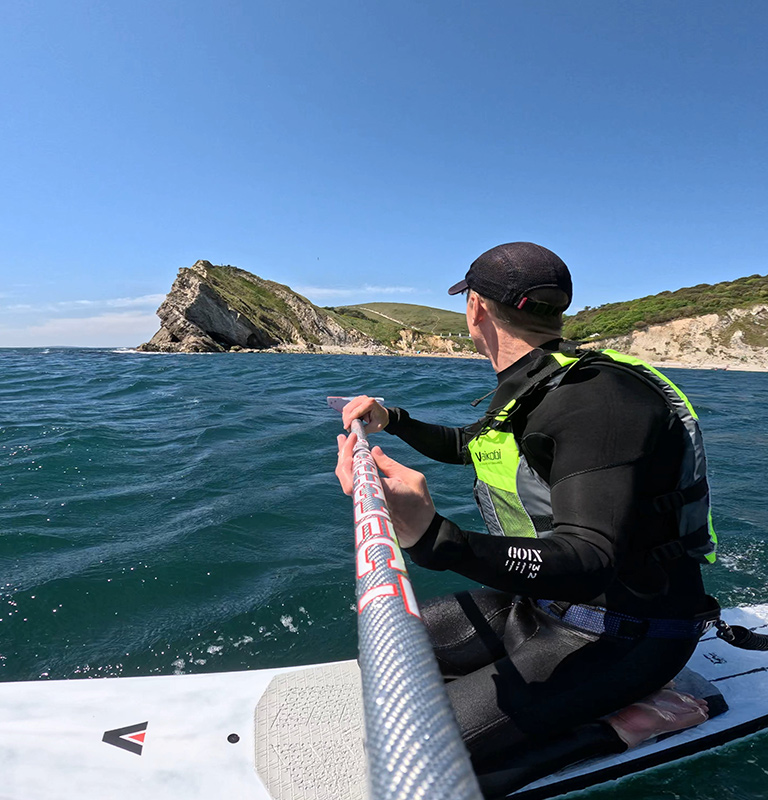Who Invented Wing Foiling?
The exact origins of wing foiling are difficult to pinpoint, as the sport has evolved relatively quickly in recent years but has its roots dating back to the early 80s. Back then, it never really took off, but with the explosion of hydrofoils in watersports, the wing suddenly gained huge popularity. In recent years it has been developed and popularized by many different riders and companies around the world. However, some credit the invention of wing foiling to a few key figures and pioneers in the sport.
Jim Drake and Uli Stanciu are credited with developing the first handheld wing in 1981, Jim was the inventor of the windsurfer, and Uli was a European windsurfing pioneer. The wing was used to propel a windsurfing board, but the handheld wing concept was very similar to what we see today. Unfortunately, the inherent drag created by the windsurfing board made it difficult to get up to any real speeds. The concept of the windsurfer also involved a lot of force going into the board through the mast. With the wing, this force was lost, and wings never really took off compared to traditional windsurfing sails.
Wings were popular with ice skaters on frozen lakes, where there was far less drag, and the sport developed in this niche and still exists today. Robby Naish should arguably get the biggest credit as the godfather of the modern sport. Robby created an inflatable wing using similar materials to kitesurfing kites. With this inflatable wing, he could propel a hydrofoil which had far less drag than a surfboard or windsurfer this meant the wing finally had a place in the water and away from the ice. Robby launched his product as the Wingsurfer in early 2019, as a pioneer of windsurfing, kitesurfing, SUP, and now “wingsurfing”. Other brands, such as F-ONE, headed up by another watersport pioneer Raphael Salles took notice.
The Naish brand were the first to market, followed by F-ONE, and now there are over 100 brands all creating wing foiling products. The major brands in the sport were originally kitesurfing brands, Naish, F-ONE, Duotone, and Slingshot were all very early into the sport. Since then, new brands such as Ensis have joined the party.
One rider who has been particularly influential in popularizing the sport is Balz Müller, a Swiss freestyle windsurfer who began experimenting with wing foiling in 2018. Müller quickly gained a large following on social media and helped to showcase the sport’s potential for dynamic, acrobatic tricks and manoeuvres. He has since become a sponsored athlete for Ensis and has continued to push the boundaries of what is possible with a wing and a foil board. Titouan Galea is another rider who deserves a mention for getting on board and pioneering the sport. He has won three world titles over the last three years and regularly releases videos of him riding huge waves with his wing foil gear. For many years he was sponsored by F-ONE, but has since joined Cabrinha.
In recent years, wing foiling has exploded in popularity around the world, with more and more riders trying the sport for the first time and companies investing in research and development to create new and improved equipment. Today, wing foiling is recognized as a distinct and exciting watersport in its own right, with its own competitions, events, and dedicated enthusiasts. It is seen as safer than kitesurfing and easier than windsurfing to learn, which helps it popularity grow. Learning to master the wing on a SUP board is one of the simplest forms of the sport, and how many people learn. Once that is mastered, it is time to step up to riding the hydrofoil.
While the exact origins of wing foiling may be difficult to pinpoint, its rapid evolution and growing popularity serve as a testament to the creativity and passion of riders and innovators around the world. Whether you are an experienced waterman looking to try something new or a beginner looking to get started with a fun and dynamic new sport, wing foiling offers a unique and exciting challenge that is sure to captivate and thrill.




